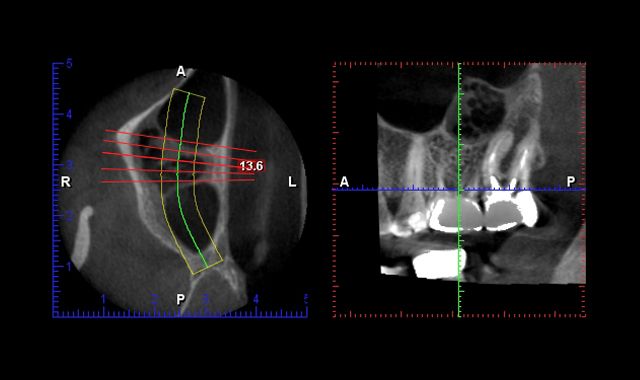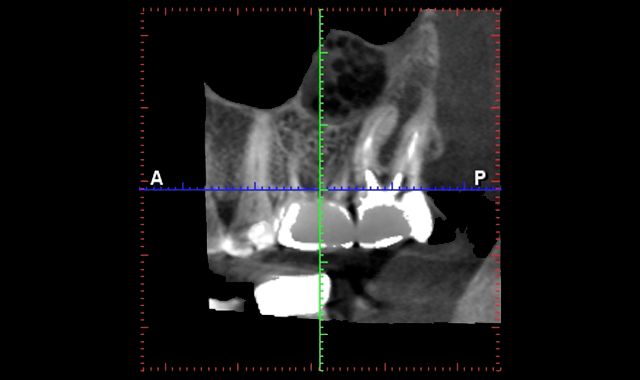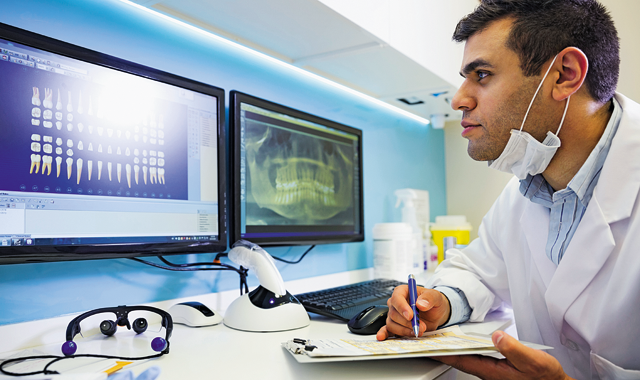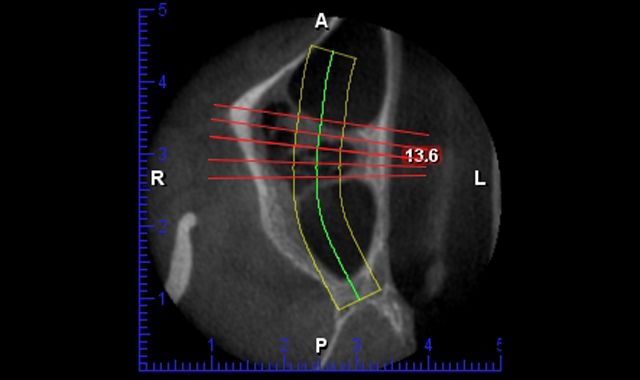The 5 most commonly asked questions about CBCT
Like all lecturers, Dr. Louis Kaufman gets dozens of questions from other dentists who attend his lectures. Dental Products Report decided to explore some of the most common questions he gets about CBCT.
Dr. Louis Kaufman is a Chicago dentist and lectures nationally on CBCT and implantology for imaging equipment for Planmeca USA, Inc.

Like all lecturers, he gets dozens of questions from other dentists who attend his lecture. Dental Products Report decided to explore some of the most common questions he recieves about CBCT.
Continue to the next page to see the top CBCT questions.




What is the return on investment or how do I justify this amount of capital?
When you purchase a cone beam, I suggest that you look at the ability of machine to generate images in different formats. You need to ask yourself, besides taking a three-dimensional image, can this machine create panoramic images? If it can take panoramic images, ask yourself, “How many panoramic images do I take in a year?” Then ask yourself, “What do I charge for those images?” For example, if I charge $100 and I take 400 panoramic images a year, then I just billed out $40,000. If this machine cost you $120,000, dollar for dollar, you recoup the expenditure in three years. Realistically, you pay for it over four years.
Remember, it’s just not about the X-rays. It’s about the amount of undiagnosed dentistry and implant planning we can do with this technology. It generates better comprehensive treatment planning and ultimately better dentistry for the patient.



How has communication improved with your patients using CBCT?
Patients are blown away when they see a three-dimensional image of their jaw. When I can show patients where I can place an implant in their jaw using their own anatomy and a chairside model, patients can visualize and comprehend the procedure more clearly. I would encourage the use of videos that all the major dental implant companies produce. Check with their marketing department and incorporate a video into your website. While the patient is in the chair, you or your team can pull it up on your website for the patient to view. This serves two purposes. First, patients can visualize it more clearly. Second, when they go home to their significant other, they can pull up your website and explain the procedure to them.



Do you need a dental radiologist to review all your scans?
It's extremely important to have a working relationship with a dental radiologist. Of course, then the question becomes, “Do I need to send every scan to the radiologist?” In my opinion, when a large field of view is taken, I recommend sending the scan to the radiologist.
The beauty of this technology is that it allows us to take small fields of view or limited fields view. Therefore, it is not necessary to send every scan to a dental radiologist. I can't stress enough the importance of reviewing all your scans even after the patient has left the office. The more we review and educate ourselves on the normal anatomy, the better we become at identifying the obscure. I also encourage taking classes that are continually being offered throughout the country on how to review a cone beam.



Do I need an intraoral scanner and CBCT?
Having an intraoral scanner and a cone beam is the perfect marriage. Both are completely independent of each other. The scanner focuses on teeth and tissue and the cone beam addresses the bony architecture. When the STL files are joined in the lab, there is complete harmony. Like a great marriage, they make each other better. From my understanding and speaking with different vendors, one can take a DICOM file obtained from the CBCT, convert it, make a virtual model, 3D printed model and fabricate a crown. So, in theory, you could prep a tooth and have an edentulous area. Plan the implant and make the crown or partial all at the same time. And then there are times we just need to take an intraoral scan and make a crown inlay or onlay.


What's your opinion on the obsolescence of a machine you purchase today?
The most important question to ask the equipment sale rep is, “Is the hardware upgradeable?” Also, is there a fee for upgrading to a newer version of the software? Many companies have software updates version updates so you should ask what is included with your purchase. Like any other technology, there are advances in how it's delivered. Going with a company that's one and done is not the way to go. I want to do business with a company (and there are many out there) that want a long-term relationship with the buyer.